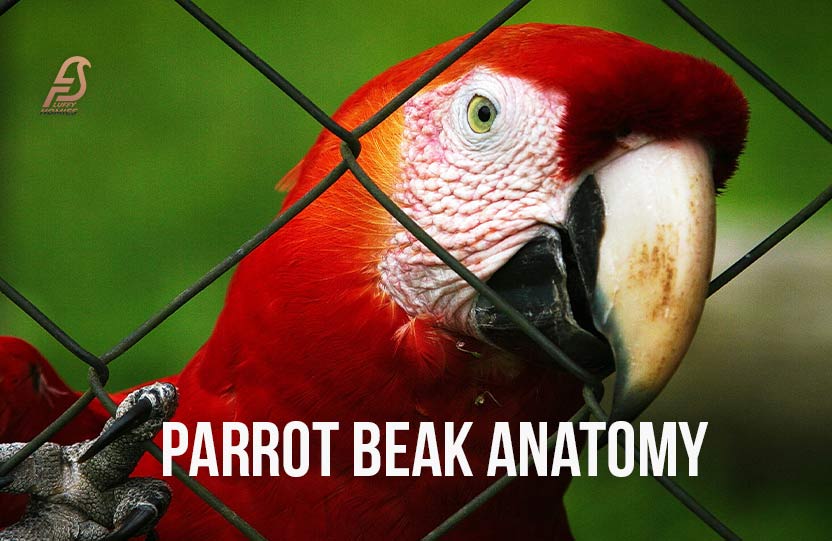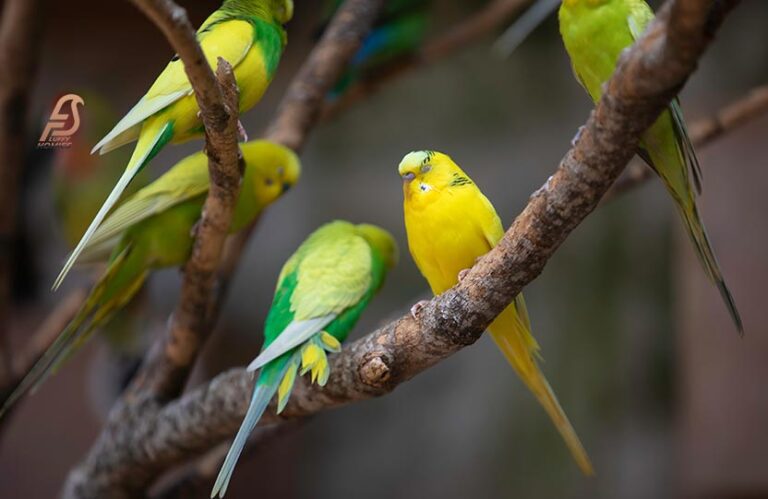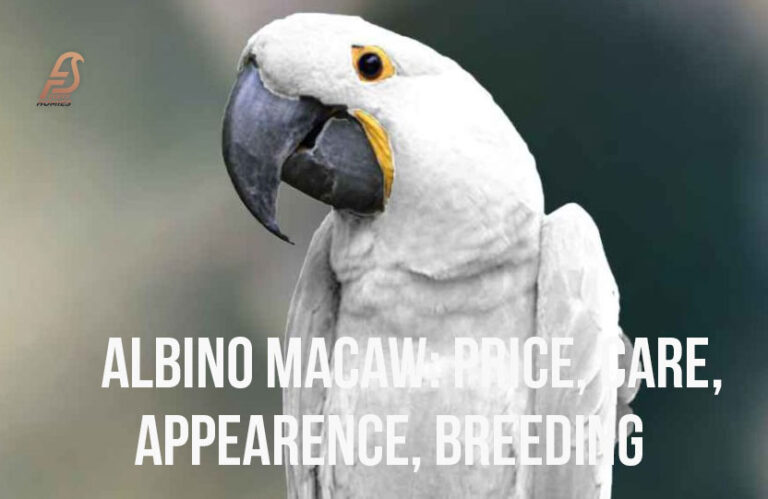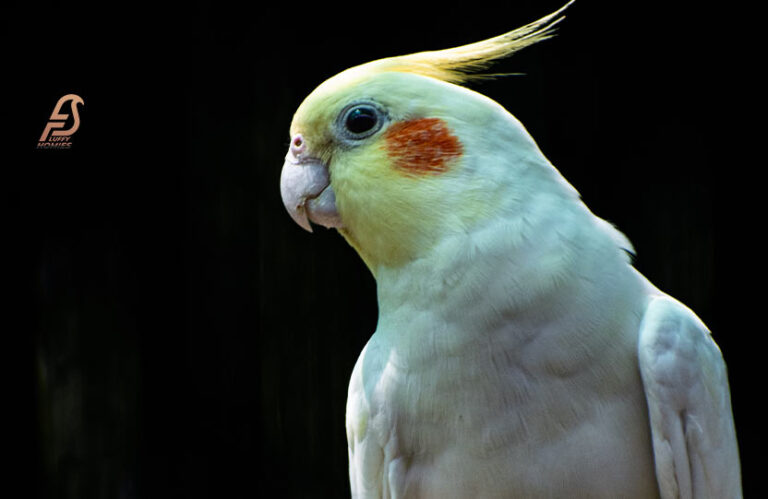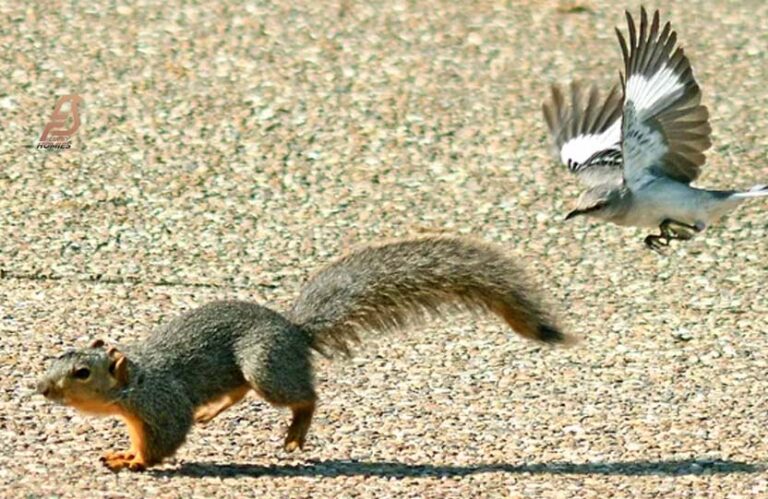Understanding Parrot Beak Anatomy (Beak Beauty Secrets 2024)
An incredible and vital part of a parrot’s everyday life is its beak. The maxilla and the mandible are the two primary components of a parrot’s beak.
There is a mandible at the base of the beak and a maxilla at the top. Parrots can feed themselves, communicate with one another, and grab objects thanks to all of these parts working in tandem.
The parrot’s beak is easily recognizable due to its rhamphotheca, a tough, keratinized coating. This protective covering prevents the beak from becoming worn down, which lets parrots utilize their beaks powerfully and precisely.
Parrots’ beaks can move and twist thanks to an interramal gap that lies between the mandible and maxilla. Both in the wild and as cherished pets in captivity, parrots like albino macaw rely on the intricate structure of their beaks for survival.
Parrot Beak Anatomy
An interesting and important part of a parrot’s everyday existence is its beak. The beak, which consists of the maxilla and the mandible, is a multi-purpose instrument that parrots use to do everything from preen their feathers to precisely handle things and split open nuts.
The upper section of a parrot’s beak called the maxilla, and the bottom part, called the mandible, work in tandem to help the bird with a variety of activities.
The keratin rhamphotheca, which encases the mandible and maxilla, is a distinguishing feature of parrot beaks. This robust covering not only gives the parrot a firm grip on various items but also safeguards the sensitive inner tissues of its beak.
The interramal space, which is situated between the maxilla and mandible, provides parrots with the mobility and flexibility they need to adapt the posture of their beaks to different tasks.
Maxilla
One important component of a parrot’s beak is the maxilla. Its function in gripping and manipulating food is crucial, as it constitutes the top section of the beak.
Parrots can effortlessly shatter nuts, seeds, and other difficult food items because of the maxilla, a fused bone that gives support and strength to the beak. The rhamphotheca, a thick coating of keratin that lines the maxilla, adds to the beak’s toughness.
The nares are apertures in the maxilla that parrots use to breathe in air when they feed. These structures, which resemble nostrils, are placed in such a way that they block the airway from food particles.
Located at the base of the beak, the cere is a specialized region of soft tissue that is housed in the maxilla. Essential to a parrot’s general health and well-being, the cere controls the beak’s temperature and moisture levels.
Also Check: Why Do Parrots Sit on Shoulders?

Mandible
The mandible is an important part of a parrot’s beak that helps in eating, handling things, and communicating. A powerful framework for grabbing and breaking nuts, fruits like guava, seeds such as sesame seeds, and other food items is formed by the beak’s lower jawbone and the maxilla.
A strong, keratinized layer known as the rhamphotheca lines the inside of the mandible, covering the bone and giving the beak its form.
The interramal gap within the mandible gives parrots the ability to insert powerful jaw muscles, which they use to crush hard shells and other tough objects.
In addition to the beak, the mandible houses the cere, a fleshy region near the beak’s base. Parrots breathe through their nostrils, which are located in this area.
Young hatchlings also have an egg tooth in this area, which helps them break out of their eggshells. A parrot’s capacity to adapt and survive in the environment is greatly aided by its mandible and all the structures and functions it contains.
Rhamphotheca
The rhamphotheca, which covers the beak externally, is an important part of a parrot’s anatomy. Parrots can’t climb, feed, or hold anything without the rhamphotheca, which is made of keratin, the same substance that is in human hair and nails.
The parrot’s beak is protected by this tough outer covering, which also provides a solid framework for the bird to carry out its daily critical tasks.
There are distinct areas inside the rhamphotheca that perform certain tasks. The beak’s upper component, the maxilla, and its lower part, the mandible, collaborate to make feeding and talking easier.
A parrot’s ability to move with precision and coordination is essential to its survival in the wild, and this is made possible by the rhamphotheca’s complex architecture.
Parrot beaks are incredibly versatile and useful, and this fact becomes clearer when one considers the function of the rhamphotheca.
Interramal Space
The interramal space is the region where the parrot’s lower and upper mandibles meet at the hinge joint; it is located in the beak.
Whether the bird is feeding, drinking, preening, or engaged in any other activity, its beak needs this area to move efficiently.
The parrot’s beak is incredibly flexible and strong because of the interramal space’s network of muscles and ligaments, which allows it deftly to handle food and other things.
The rhamphotheca, a thick, keratinized layer covering the beak, is housed in the interramal space, which is located at the junction of the maxilla and mandible.
This covering prevents the beak from becoming worn down and also gives it a solid surface to hold and manipulate objects.
The interramal area is an intricate anatomical structure that plays a crucial role in the parrot’s foraging, communication, and environmental interaction abilities.
Parrots are easily identifiable by their distinctive anatomy, which includes a fleshy region at the base of their upper beaks called the cere.
Species of parrots determine the appearance of this structure, which is typically colorful. Specialized tissue covering the cere helps regulate temperature and protects the nose.
Cere
The cere does double duty as a protective structure and a developmental place for the parrot’s nares, the entrances to its nasal passages.
Changes in the cere’s color or texture might reveal underlying health concerns or developmental phases, providing significant information about a parrot’s health and maturity.
To properly care for and monitor the well-being of these clever birds, parrot enthusiasts, and carers need to understand the structure and function of the cere.
Nares
At the base of the upper jaw are the parrot’s open nasal passages. Because they allow air to enter and exit the bird’s nasal cavity, these nostrils are an essential part of the bird’s respiratory system.
While parrots and humans have Nares for inhalation and exhalation, parrots lack a highly developed sense of smell. A parrot’s nares are crucial to its health despite their simplicity in design.
The nares of parrots can range in size and form from one species to another. In general, parrots are made to properly control airflow, while some have bigger holes and others smaller.
One way parrots help their respiratory system work is by keeping their nasal passages free. Regular inspection of the nares is also crucial for bird owners since a bird’s general health is reflected in its nares.
Egg Tooth
At the very tip of a baby parrot’s beak sits a tiny, pointed item called an egg tooth. During hatching, this specialized adaption is vital for helping the chick break through the egg’s hard shell.
The egg tooth, despite its misleading name, is only a transient protrusion of keratin—the same protein that makes up most of a parrot’s beak.
The baby parrot’s egg tooth will come out within a few days following a successful hatching. Once a chick has emerged from its eggshell, it is natural for it to remove its protective covering, as it will no longer need the egg tooth.
In the early stages of a parrot’s existence, the egg tooth is essential since it helps the bird break free from the eggshell and start its voyage across the world.
Also Check: Are Albino Parakeets Rare?
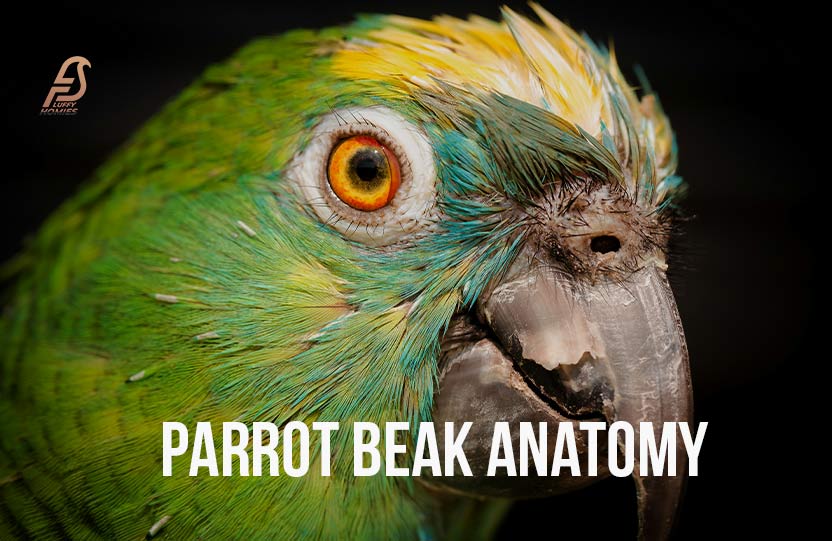
What is the Anatomy of a Macaw’s Beak?
The top and lower mandibles are the two primary components of a macaw’s beak. The top portion of the beak, called the upper mandible, is like a hook and is utilized for gripping and manipulating things.
Macaws rely on it as a strong tool to shatter nuts and seeds, two staples in their diet. In addition to the upper mandible, the macaw also has a lower mandible that aids in the effective digestion of food by chewing.
Foraging, preening, and social interaction are just a few of the many tasks facilitated by the coordinated use of these two jaws by macaws.
In addition to its obvious culinary function, the beak of a macaw serves an essential purpose in the bird’s daily existence. A thick covering of hard keratin covers the beak of a macaw and grows back every year.
The bird can keep its beak form because it wears it down through usage. The macaw’s ability to perceive and explore its surroundings is enhanced by the sensory organs housed in its beak.
In addition to being used for grooming, playing, and even displaying affection towards its bonded mate or caregiver, the beak plays an important role in the social interactions of macaws.
What is the Color of a Parrot’s Beak?
The beak color of parrots can differ greatly from one species to another. It might be a wide spectrum of colors, from bright reds, oranges, and yellows to darker shades like black or gray.
One of the most telling characteristics that might help with species identification is the colors. Parrot beak coloration is caused by many pigments, one of which is carotenoids.
These pigments are involved in the overall brightness of the bird’s plumage and also contribute to the beak’s color.
The beak coloration of parrots may be influenced by environmental conditions, dietary factors, and heredity, making it a feature that is both dynamic and species-specific.
What Are Parrots Beaks Made Of?
The beak of a parrot is mainly composed of keratin, which is an intriguing composition. Our hair and nails also contain the strong protein keratin.
The beak’s strength comes from this durable substance, which it uses to shatter seeds, preen feathers, and climb trees. Aside from keratin, the beak also has nerves, blood vessels, and an immune system that keeps it healthy and sensitive.
And it’s the pigments within the keratin layers that give parrot beaks their vivid colors. These pigments contribute to the variety and beauty of these birds by coming in a variety of hues, from greens and blues to yellows and reds.
Parrot beaks are visually striking and functionally exceptional due to the unusual blend of keratin, colors, and sensory components.
What Are the Uses of a Parrot’s Beak?
A parrot’s beak is an impressive trait that performs several vital roles. The beak, which is constructed from durable keratin, has several important functions, including feeding, communication, grooming, climbing, and defense against predators.
Various parrot species have modified their beaks to accommodate their unique way of life and the food they consume.
Macaws, with their powerful, hooked beaks, are great for breaking nuts and seeds, whereas hummingbirds, with their long, thin beaks, are experts at drinking nectar from flowers.
The beak of a parrot is multipurpose; it helps the bird eat, communicate, and express itself.
Parrots have strong ties with their caretakers and show a wide range of emotions through beak behaviors such as nibbling playfully, preening each other, and even gently “beak” human partners.
Additionally, the distinctive patterns and bright colors of the beak can serve as species-specific identifiers, making it easier to recognize and identify various parrot species.
What Are the Signs of a Healthy Beak?
The color of a parrot’s beak is one of the most telling signs that it is healthy. A beak that is in good health will usually be uniformly colored and have a smooth texture.
Keep an eye out for any changes in color, such as patches or dark areas, because these might indicate a more serious problem.
Furthermore, a strong, robust beak is an indicator of good health. There shouldn’t be any indications of fragility, flakiness, or severe damage.
The size and general form of the beak are additional crucial features to look for in a healthy specimen. If a bird’s beak is well-kept, it should look balanced and proportionate to its head.
Health concerns may arise from any irregularities, such as excessive growth or uneven wear. If you want to make sure your feathery buddy is healthy in general, it’s a good idea to keep an eye on its beak and make note of any changes in its look or behavior.
Parrot Beak Problems and Issues
There are some beak-related problems that parrots might face. Overgrowth is a typical issue; when the beak gets too long, it can get in the way of the bird’s eating and grooming.
Nutritional deficiencies, an absence of suitable chewing objects, or other medical issues can all contribute to this.
The best way to keep this problem under control and ensure that the bird continues to enjoy life to the fullest is to have it trimmed regularly by a trained avian veterinarian.
The misalignment of the parrot’s top and lower beaks, known as beak malocclusion, is another cause for worry. The bird may have pain, trouble feeding, and trouble picking up things due to this dislocation.
Injuries or incorrect beak wear can also cause beak malocclusion, which can be present at birth. If you see any unusual behavior in your parrot’s beak, it is important to consult a veterinarian immediately to address the problem and protect the bird’s health.
Final Thoughts: Parrot Beak Anatomy
Finally, to fully grasp the many purposes served by a parrot’s beak, one must be familiar with its complex structure. These remarkable birds can flourish in their native surroundings because their beaks are so adaptable.
They can break nuts with them and preen feathers with them. Parrot owners may help keep their feathery friends healthy by being familiar with the symptoms of a healthy beak.
In addition, if you are aware of any beak problems like overgrowth or infections, you may intervene quickly to avoid any pain or health concerns for the parrot.
Pet owners may help keep their beaks in top shape by giving their pets the attention they need, feeding them healthy food, and giving them fun toys to chew on.
Not only does the beak determine how a parrot looks, but it also has a significant impact on the bird’s behavior and vitality.
Frequently Asked Questions: Parrot Beak
A parrot’s beak is powerful and curved, and its top and lower mandibles are both moveable. They have a beak that helps them split nuts and seeds, a tongue that helps them mimic sounds, and a jaw shape that is unique to them.
Keratin makes up the top and lower mandibles of a bird’s beak. To do things like feeding and climbing, its outward appearance changes from species to species. It has nerves and blood vessels on the inside, and it stays healthy with continuous usage.
Parrot beak aseel prices can range greatly depending on things like the animal’s age, pedigree, and unique traits. Obtain the most up-to-date and accurate pricing information by contacting trustworthy breeders or vendors.
